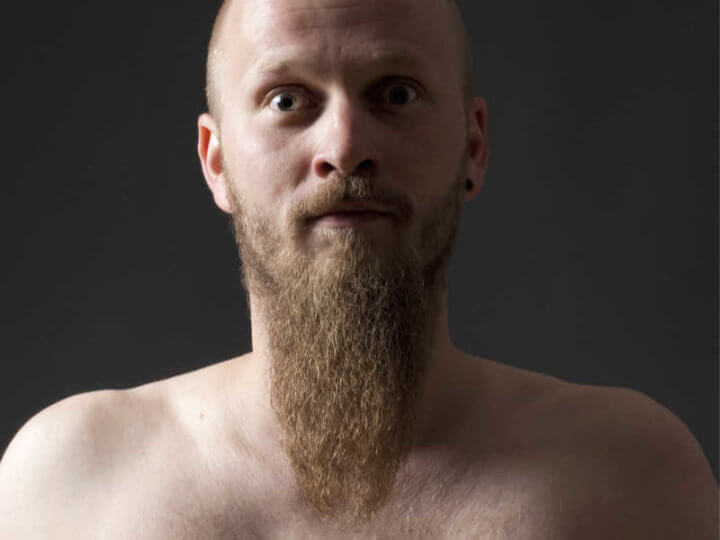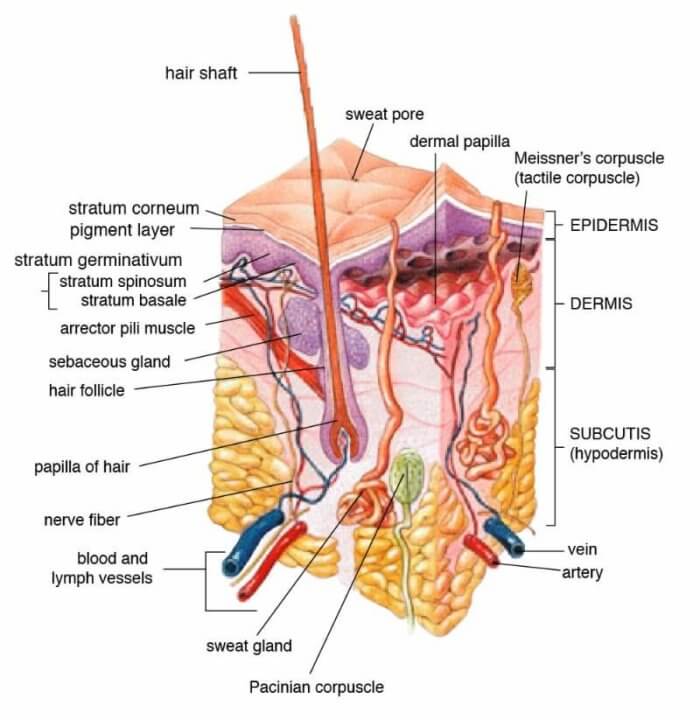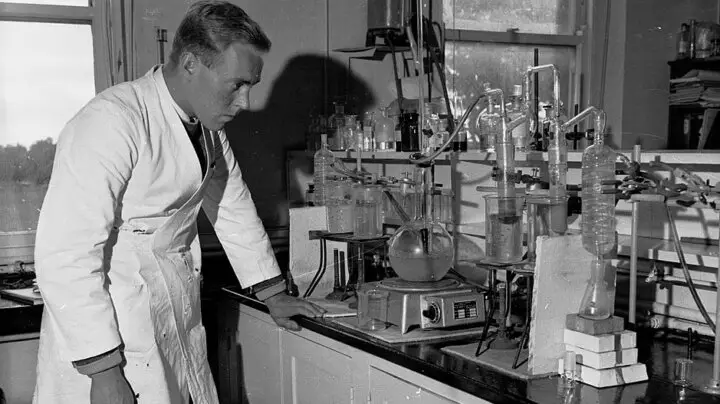
Historically, this may be a tale as old as shaving itself, and is multi-faceted—you may have been told that shaving more makes your hair grow faster, longer, thicker, etc. It is sometimes reinforced by popular media sources and social media influencers, But what’s the real story here?
I’ve heard it myself and I’ve read the rebuttals by dermatologists and skin experts. But I got to wondering about the actual scientific data underlying the conclusion. Why hasn’t anyone written about that? So I thought I would. But first, a little background.
How Hair Grows

Human hair and its growth cycle is surprisingly complex, made up of many parts. But for this article let’s simplify it into a three stage process.
The first stage of the hair growth cycle is called the Anagen stage. This is the active growth phase and lasts several years.
Next comes the Catagen stage. This relatively brief phase of about 2 weeks is a natural, carefully controlled death of the hair fiber and the area around the papilla.
Finally there is the Telogen stage, a resting phase of about 3 months where the old hair fiber sheds and the area prepares itself for a new Anagen stage to begin.
Each individual hair is governed by its own cycle, which is why you don’t notice all of your hair falling out at the same time.
The Scientific Evidence
What is the scientific evidence that disproves the claims that shaving makes hair grow faster (or thicker)? From my online research I found out that there are two frequently-cited experiments, one from 1928 and one from 1970.
The 1928 Study
The 1928 study by Mildred Trotter examined the question with a small group of men. Here are some extracts from her paper in The Anatomical Record (in italics):
MATERIAL AND TECHNIQUE
The region of the face from which the samples were taken was on the left cheek extending between two imaginary, horizontal and parallel lines; one at the level of the tragus of the ear, the other at the level of the lower margin of the lobule of the ear…. In lathering the face each man always used the same brand of shaving soap, and water of the same temperature. The razors were kept in as uniform a condition as possible…
MEAN GROWTH RATE
One of the earliest methods, and one still used to determine the growth of hair per unit of time, is that of dividing the length which the hair attains during a certain period by the number of units in the period and assuming that the result obtained is the mean growth per unit of time. The mean growth per hour was determined for each of the various periods which had elapsed since the previous shaving.
These results are in accord with those of [an earlier study in 1926] who measured shavings taken during parts of three years from [the] ‘zygomatic region of the face of one individual. He writes that “there is almost uniform decrease in the average rate as the hair is permitted to grow over longer periods,” and thus concludes that “the rate of hair growth is most rapid immediately subsequent to cutting, the rate gradually lessening as the time of cutting becomes more remote.
CONCLUSIONS
- No correlation was found between the variation in the day’s temperature and the variation in the hair growth.
- The modal amount of hair growth increased in direct proportion to the increase in the time period.
- The mean amount of hair growth decreased per unit of time as the time period increased, but this may be explained as due to the cyclic activity of the follicle, since the longer the period the greater the number of follicles to become quiescent.
- There was no evidence that shaving had any effect on the growth of the beard.
Here is a link to view the entire article at the Anatomical Record (unfortunately you must pay to view it at the Wiley Reference Library).

The 1970 Study
The 1970 study by Yelva Lynfield (MD) and Peter Macwilliams (MD) as described in The Journal Of Investigative Dermatology took a slightly different approach. They had a small group men shave one of their legs weekly for several months, while leaving their other leg unshaven as a control. Here are some relevant extracts (in italics):
MATERIALS AND METHODS
…The anterior crural area was selected for study because of its high proportion of telogen hairs and relatively long duration of telogen. This would make it easier to detect premature onset of anagen hair on an area with a low proportion of telogen
hairs and a short telogen duration relative to anagen, such as the scalp. According to Trotter, most leg hairs (average 83%) are in telogen, and stay in telogen much longer than anagen.
…men had the hair on their legs shaved with a straight razor and warm water. The first shavings were discarded. One to three weeks later, a carefully measured area on each leg was shaved and all the shavings collected. A 10 by 10 em square card was placed just below the patella, with its upper edge horizontal and centered over the patellar tendon. The card was outlined with Micropore tape and then removed. All the hair within the 10 by 10 cm area outlined by tape was shaved and collected by gentle brushing into a weighing dish. It was dried in a desiccator with calcium chloride overnight. and then weighed on an analytic balance. The length and width of 10 dried hairs from each ample was measured with an ocular micrometer standardized against a Neubauer counting chamber. For several months thereafter each man shaved one leg weekly, discarding the shavings, but did not shave the other leg. Then samples from both legs were again carefully collected. shaving at the same intervals as in the previous collection, and examining the hair in identical fashion.
…
This experiment gave additional evidence that shaving does not make hair grow faster or stimulate new hairs to grow.
You can read the entire paper at the Journal Of Investigative Dermatology HERE (PDF).
Other Studies
There are at least ten other related studies (some using mice) that also cite these two references.
What Dermatologists Say
Most dermatologists just state the fact that shaving doesn’t make hair grow back faster/thicker/darker without citing the research. Now you know the research, too.
Some dermatologists also suggest that the act of shaving may cause what amounts to a “split end” on hair, giving it the appearance of looking thicker.
Conclusion
Perhaps the best summary on this topic comes from the U.S. National Institutes of Health:
Shaving removes the dead portion of hair, not the living section lying below the skin’s surface, so it is unlikely to affect the rate or type of growth. Shaved hair lacks the finer taper seen at the ends of unshaven hair, giving an impression of coarseness. Similarly, the new hair has not yet been lightened by the sun or other chemical exposures, resulting in an appearance that seems darker than existing hair.

Good work, Mark. Thanks for the schooling!
It’s easy to see how the idea that shaving makes a man’s beard grow thicker, tougher, and often darker. Most men start shaving when their beard is still coming in: they start shaving peach fuzz and a dark down on the upper lip. And as they continue to shave over the following weeks, months, and years, their beard really does get thicker, tougher, and darker.
The conclusion that because this happened after they started shaving, it must have happened because of the shaving is an example of a common fallacy: post hoc ergo propter hoc (“after this, therefore because of this”) — or it might be seen as another example of “correlation does not mean causation.”
Being the son of a dermatologist, I knew this from an early age. Also, chocolate does not cause pimples.
Comments are closed.